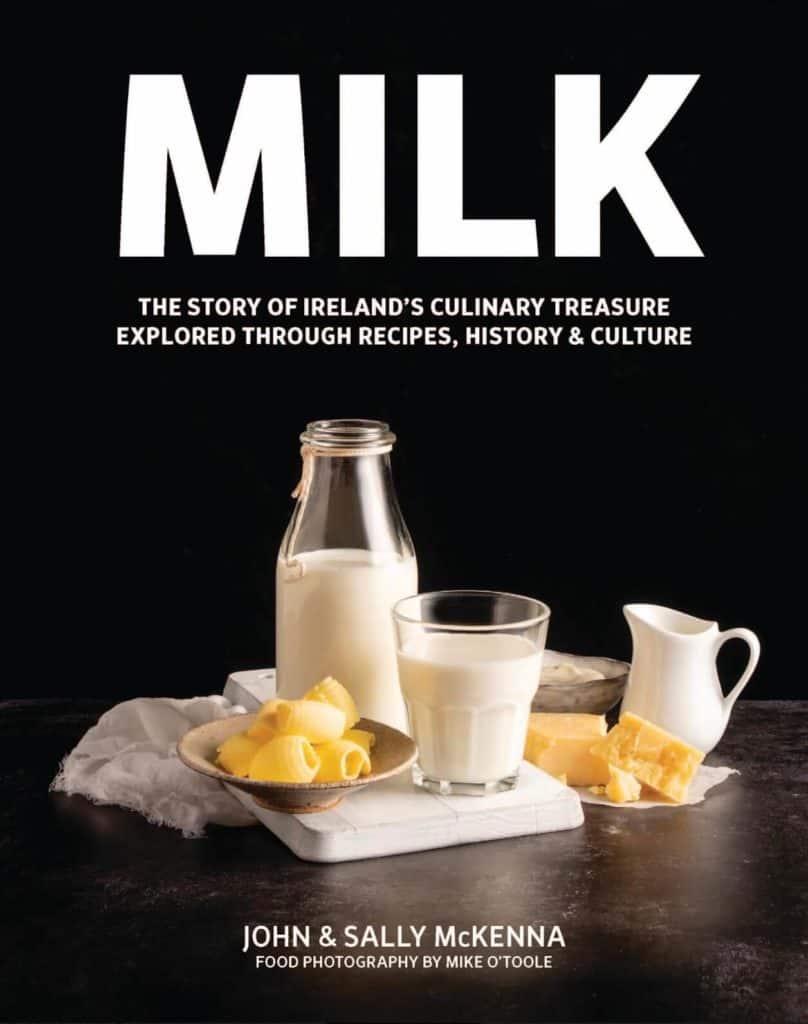Keeping Active: Benefits for Body and Mind
With sporting clubs and gyms no longer open, a daily walk, a 2-k radius run or a home work-out may now feature as a much-anticipated and enjoyable part of your new routine.
We are living in world right now where staying at home has become the best thing to do for our health. Within the Government guidelines, however, stepping outside for brief exercise remains an exception for leaving your home. In this article, we discover the many benefits exercise can have on our mood with Chartered Psychologist, Shane Martin. There is advice on fuelling wise around exercise, with recipes provided by the Sport Ireland Institute. We also include a link to a home workout with Rugby Seven’s International, Greg O’Shea.
Keeping Active – what counts?
There are many health benefits to being active. For example, regular exercise can give us more energy; help maintain a healthy body weight; and help improve heart, lung, muscle and bone strength.
The National Guidelines on Physical Activity recommend that adults take part in at least 30 minutes of moderate intensity activity a day on five days a week (or 150 minutes a week). It is recommended that children and teenagers be active at a moderate to vigorous level each day for at least 60 minutes.
Remember, if you are generally inactive, start off slowly and gradually increase the duration, frequency or intensity of your activity. Any dramatic change to your physical activity patterns is not advisable right now, as this would need to be guided by your doctor to address any individual concerns. However, you can still benefit from low and more moderate intensity exercises such as walking. It is also a perfect time to enjoy gardening or tackle some house-based cleaning and clear-outs – which can all count towards the physical activity guidelines. If you exercise regularly, more vigorous activity examples can be included, such as jogging/running, rope skipping and online work-outs.
Protecting our mental health with daily exercise
Shane Martin C.Psychol.Ps.S.I.
Chartered Psychologist of the Psychological Society of Ireland
Many people may be feeling a sense of being trapped due to the social distancing recommendations and 2-kilometre daily exercise limitation. Anxiety can grow as we realise that it is going to take some time for our world to revert back to normal. A sustained sense of insecurity can govern each day and this is very unsettling. We need to protect our mental health. We need to invest in a deliberate and concentrated way in strategies that help us not only cope, but grow stronger. The good news is that some very simple strategies can make a huge difference when it comes to improving mood, reducing anxiety or helping us to sleep better. Exercise should be number one on your list. It’s free of charge and easy to practice. Daily exercise is a habit worth forming for so many good reasons.
A Natural High
Exercise creates a natural chemical ‘high’ by releasing endorphins (these are the ‘feel-good’ chemicals). It also helps the release or ‘burn-off’ of excess adrenaline, which contributes to that sense of being on edge or unsettled. Serotonin contributes to a range of functions including appetite, sleep and mood. Research shows that regular exercise can alter serotonin levels resulting in improved mood and an enhanced sense of well-being. Studies show that the effect of exercise is immediate and can last for hours. Best results are reported from exercise that takes place on a daily basis. That’s the small print in the contract!
A Welcome Distraction
Exercise is an excellent form of distraction. Often we can get stuck in a cycle of worry and we keep thinking about our problems. The more we think about them the more anxious we remain. We all can have a bad day and let the news and the curtailment of our freedom bring us down. We can feel irritable and ready to ‘snap’ at the drop of a hat’. Removing yourself from your desk, a stressful home situation or from the cycle of continuous anxious thinking and going for a walk can prove to be the ideal tonic. You will definitely feel much better afterwards. However, don’t bring your worries with you. If you have a tendency to brew and bubble while you walk it probably would be better to bring some company with you. Switch the channel and avoid discussion about Covid-19, mortgage repayments, job insecurities or any other problems that you may have. Don’t spoil the potential benefits of the exercise by bringing anxiety as a partner with you. Explain to your walking partner that you want to avoid negative thoughts. If you have children, you can bring them along with you. They are more unlikely to be passionate about discussing the worries of the world!
A Tension Reliever
Exercise protects against unhelpful anger. Even a thirty-minute brisk walk can have a robust protective effect against the build-up of anger. Studies suggest that if you are likely to be in an anger-producing situation some exercise beforehand helps. In effect, you blow off some of the steam beforehand. You are then more likely to handle it better and be more objective, neutral and fair in your approach. Maybe, if you are planning to roar at your children for not tidying up or scream at your partner for making your kitchen his office you should grab your coat and set out for a brisk walk around the block. When you return, it is more likely that you can raise these issues with a sense of emotional control and with greater effectiveness.
An Energy-booster
Surprisingly exercise on a regular basis leads to an increase in energy levels overall, due to an increase in cardiovascular fitness. Having some extra energy in storage will help protect against fatigue and boost motivation. Worry and stress can tire our bodies. Working at home is still working – and the stresses of deadlines and outcomes are as real while working on a laptop at home or in the office building. We often find it hard to motivate ourselves to start or even complete tasks because our energy has left our bodies. If you have a large piece of work to concentrate on, it would be a good idea to psychologically prepare for it by going for a walk beforehand. When you return, you are more likely to complete it satisfactorily.
A Confidence-Builder
Exercise can help build confidence and self-esteem. There is a wonderful opportunity in the current climate to become fitter and healthier. When we start to feel fitter and energised we will also feel more content knowing that we are investing in our health. This produces a new confidence and a sense of satisfaction. Often people transform from being worried about their appearance or excess weight, to celebrating feeling and looking better. It should be easier for exercise to become a daily ritual in the current climate. You no longer have the excuse that by the time you get home you are too tired to contemplate it. You are probably more at home nowadays than ever before.
A Sense of Achievement
Exercise can produce a real ‘sense of achievement’. Fitness is an excellent area to set targets and goals and to follow a path to achieving them. We need projects at the moment because it hard to see the way out of the pandemic crisis. Initiating daily exercise as a daily ritual helps to project ourselves beyond the current situation. This is a good habit to form. Often we can get ourselves into a rut and start to believe that we can never get around to doing the things we really want to do. We can now prove this theory to be wrong.
Nutrition Focus: Fuelling Wise around Exercise
If partaking in low to moderate-intensity physical activity, following general healthy eating guidelines should be sufficient to provide the energy and nutrients you need. However, if you are keeping up a more intense exercise regime at home – through gym and exercise classes online for example -we have some tips below to help ensure you fuel up beforehand and recover well afterwards:
Food Fuel
Fuel up 2-3 hours before an intense online exercise class or fast run with a meal such as pasta or rice with tomato-based sauce and chicken; baked potato with beans and cheese; or cereal with milk/yogurt. If needed, top up energy with a carbohydrate-based snack 60 mins beforehand e.g. cereal bar or fruit smoothie.
Protein Power
Protein foods (milk, lean meat, eggs, beans, lentils, cheese, fish, yogurt) should be included at each meal time. Consuming protein (20- 25g) following an intense session is particularly useful to assist muscle growth and repair.
Drink Up!
Ensure adequate hydration when beginning your exercise by drinking fluid throughout the day. Rehydrate afterwards to replace fluid lost; water or skimmed milk are good options.
Recovery is Key
Effective recovery is essential to perform your best in the next session. If your next meal is some time away, aim to start refuelling within 30-60 mins afterwards e.g. sandwich with chicken/tuna/cheese; low-fat/skimmed milk with banana; or yogurt with granola. Try to include foods that can help address the ‘3 R’s of Recovery’, with carbohydrate to help Refuel energy stores; protein to assist with muscle growth and Repair; and fluid to help you Rehydrate. A good example is milk, which naturally contains nutrients to help address all of these key aspects of recovery.
Discover More
The National Dairy Council (NDC) have produced a ‘Fuelling Wise for Sport and Exercise’ booklet, in partnership with Sport Ireland Institute to advise on topics such as losing weight; gaining muscle; the role of carbohydrates, protein and fats; tips on hydrating; recovery meals; and supplements. You can download this booklet here.
Recovery Recipes
Below are some delicious recipes brought to you by the Sports Ireland Institute (SII) Performance Dietitians who work with Ireland’s elite athletes. These are perfect options after a workout to help your body recover. For more insights from Head of Nutrition Performance with the SII, Dr. Sharon Madigan, you can view a wide range of videos HERE.
Mixed Berry Smoothie
Ingredients:
250ml milk
100g vanilla yogurt
40g oats
1 cup of frozen berries
1 tablespoon ground flaxseed
Honey to sweeten
Method: Simply blitz all the ingredients together until smooth.
Banana & Oat Smoothie
Ingredients:
300 ml milk
60 g oats
1 banana
1 Tbsp peanut butter
100g Greek-style yogurt
Honey to sweeten
Method: Simply blitz all the ingredients together until smooth.
Cottage Cheese Pancakes
Ingredients:
100 g oats
2 large eggs
100 g cottage cheese
1 banana
1 pinch baking powder
1 Tbsp milk
Olive Oil
Method:
Simply blitz all the ingredients (except the oil) together until smooth, adding extra milk if it’s too thick.
Prepare toppings of choice – figs/nut butter / honey / Greek-style yogurt / fruit.
Heat a frying pan over medium heat, add some oil and drop heaped tablespoons of the batter into the pan and cook for 3 mins or until bubbles start to form.
Carefully flip and cook for a few mins, or until the pancakes are lightly gold.
Serve with toppings and enjoy!
Home Workout with Rugby Seven’s International Greg O’Shea
For futher information contact:
Cathy Currran, Communications Manager, National Dairy Council
+353 1 290 2518 | pr@ndc.ie

























